RMA is composed of professionals specializing in software development and the development and application of numerical models in the field of water resources. Our team offers extensive knowledge of our local Bay-Delta and river-reservoir systems, as well as expertise in hydrodynamics, water quality and sediment transport.

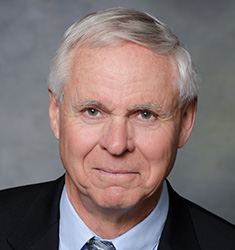
Donald J. Smith, P.E. President
Donald Smith is a pioneer in developing and applying numerical computational models to surface water systems. Since 1967, Don has been responsible for a wide variety of model development and application projects involving hydrodynamic, thermal, water quality, and sediment transport for estuaries, streams, and reservoirs. He is the principal author of HEC-5Q, a river-reservoir temperature and water quality model developed for the US Army Corps of Engineers Hydrologic Engineering Center. Don has applied HEC-5Q to a number of major watershed systems in regions throughout the country. In addition, Don has extensive experience using other models, such as RMA’s finite element models, and has managed numerous water quality studies for the firm, including many in the San Francisco Bay and Sacramento-San Joaquin Delta. Don is a California-licensed professional engineer and holds a bachelor’s degree in civil engineering from the University of California, Berkeley.
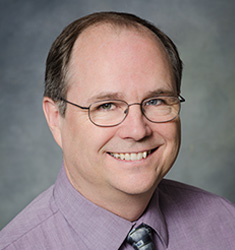
John F. DeGeorge, Ph.D., P.E. Principal, Project Manager
John DeGeorge joined RMA in 1994 and has played a leadership role in formulating, developing and applying numerical models for the US Army Corps of Engineers (USACE) and other federal, state, and local agencies. He has led RMA’s software development work for the USACE Hydrologic Engineering Center (HEC), and has contributed to many of HEC’s current water resources engineering applications. He is the primary author of the multidimensional particle tracking model compatible with the RMA finite element modeling system, primary author of the HEC-ResSim reservoir system simulation model, and developer of graphical user interfaces and decision-support systems for other surface water modeling tools. In addition, John has managed numerous applications of the RMA San Francisco Bay-Delta Model for analysis of hydrodynamics, water quality, sediment and particle transport in the Sacramento-San Joaquin Delta. John is a California-licensed professional engineer. He earned his bachelor’s degree in civil engineering from California State University, Chico and his master’s and doctorate degrees in civil and environmental engineering at the University of California, Davis.
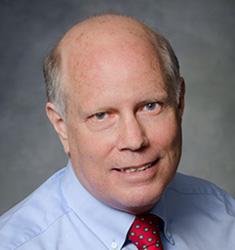
Richard R. Rachiele Principal, RMA Bay-Delta Model Lead
Richard Rachiele joined RMA in 1985 and has nearly 40 years’ experience in applying numerical modeling techniques to water quality, hydrodynamics, and sediment transport in rivers, reservoirs, and estuaries. As senior modeler, Richard has been responsible for configuring, calibrating, and applying the RMA San Francisco Bay-Delta Model. In addition, Richard has been responsible for a variety of projects related to numerical model development and application, as well as software and user interface development and GIS integration. He has also been a member of the RMA team that participates in developing and supporting the USACE Corps Water Management System and HEC’s next generation of software. Richard holds a bachelor’s degree in geophysics and geology from the University of California, Riverside, and a master’s degree in civil engineering from the University of California, Berkeley.
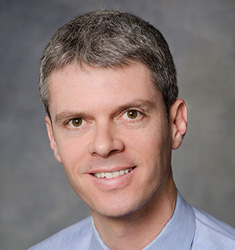
Ed Gross, Ph.D. Principal, 3-D Modeling Lead
A member of the RMA team since 2011, Ed Gross develops and applies state-of-the-art models to environmental simulations. Software tools developed by Ed, including hydrodynamic models, particle tracking models, individual based models, and transport analysis tools are currently used in several consulting and research projects. He has applied these and additional tools in environmental studies in the coastal ocean, estuaries and rivers. He is recognized as an expert in estuarine physics and transport processes, particularly in the San Francisco Estuary, and often collaborates with faculty and researchers at Stanford University, UC Davis, UC Berkeley, Tokyo University of Marine Science and Technology and other universities and research institutes. Ed earned his bachelor’s degree in civil engineering from the University of California, Los Angeles; his master’s degree in civil engineering from Stanford University; and his doctorate in civil and environmental engineering from Stanford University.
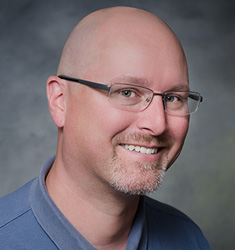
Peter S. Morris Senior Software Developer, Software Development Lead
Since Peter Morris joined RMA in 1997, he has participated in developing software for HEC. He has worked on the Corps Water Management System (CWMS) since its inception and is a lead developer for many features. He has taken part in lead development across all aspects of the CWMS and has ongoing responsibility for the data objects, graphical data editing, data acquisition, data exchange, and database access libraries. Peter is also a key figure in providing production CWMS support to USACE district offices, working with all deployed versions across Solaris and Windows environments. In addition, Peter helped the USACE Southwestern Division initiate its Report Generation Interface/Replacement of Water Control Programs (REGI/ROWCPS) project and is lead developer for that project. Peter holds a bachelor’s degree in environmental toxicology from the University of California, Davis.
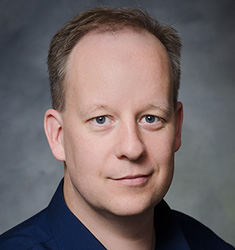
Shannon Newbold Senior Software Developer
Shannon Newbold joined RMA in 1997 and has participated in and been responsible for a variety of projects related to HEC software, including the Java-based application framework now used in a number of USACE, US Bureau of Reclamation, and RMA applications. Shannon is the primary developer for HEC’s Flood Impact Analysis (HEC-FIA), Flood Damage Reduction Analysis (HEC-FDA v2.0), Ecosystem Functions Model (HEC-EFM Sim), and Regime Prescription Tool (HEC-RPT) programs, which he brought from discussions through current releases and continues to support. Shannon earned his bachelor’s and master’s degrees in computer science from the University of California, Davis.
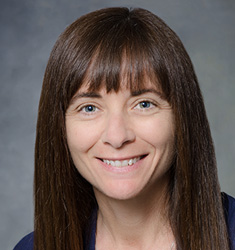
Stacie E. Grinbergs, P.E. Senior Water Resources Engineer, Numerical Modeler
Since joining RMA in 1997, Stacie Grinbergs has developed unique expertise in applying multidimensional models of hydrodynamics and water quality in the Sacramento-San Joaquin Delta. Stacie has participated in a wide range of high-profile studies of the San Francisco Bay-Delta, using the RMA suite of finite element models to evaluate potential large-scale changes in the system, including assessments of tidal marsh restoration, levee failures, and construction/modification of operable gate structures. Stacie is a California-licensed professional engineer. She completed her bachelor’s degree in civil engineering at the University of California, Irvine and earned her master’s degree in civil engineering at the University of California, Davis.
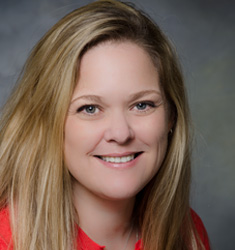
Shannon Larson Senior Software Developer
Shannon Larson joined RMA in 2001 and has participated in and has been responsible for a variety of projects related to HEC’s Java-based application framework. Shannon works closely with the U.S. Army Corps of Engineers (USACE) Hydrologic Engineering Center (HEC) managing various HEC projects. Her main focus is Project Lead for the USACE Corps Water Management System software, CWMS. She was the lead developer of the hydrologic water quality modeling system (HWMS) and has worked extensively on developing enhancements for HEC-ResSim (HEC’s Reservoir System Simulation software), including the HEC-5Q, Ensemble, Monte Carlo, and Firm-Yield plug-ins. In addition, she is a key player in debugging HEC-ResSim issues and providing support for HEC-ResSim and CWMS specific projects. Shannon has authored and co-authored software documentation and teaching materials, and assists with software training and quality-assurance testing. She earned her bachelor’s degree in computer science with a minor in mathematics from California State University, Chico.
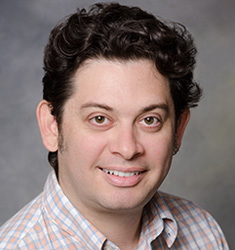
Ben Chacon, Ph.D. Senior Software Developer
Ben Chacon joined RMA in 2010 and has focused on development of computational models for HEC. He has helped expand Monte Carlo simulation capabilities for HEC’s Water Analysis Tool (HEC-WAT), HEC-ResSim, and HEC-FIA, adding consideration of correlated sampling, data aggregation and different treatment of epistemic and aleatoric uncertainty. As part of his work on HEC’s River Analysis System (HEC-RAS) projects, Ben designed and implemented a new 2D flow model (RAS2D) that supports solution of the full shallow water equations as well as the simplified diffusion-wave equation over an unstructured computational grid. He has also implemented advanced matrix solvers to improve performance of the RMA2 and RMA11 finite element models. Ben holds a bachelor’s degree in computer science and earned doctorate degrees in mathematics from Pennsylvania State University and in aerospace engineering from the University of California, Davis.
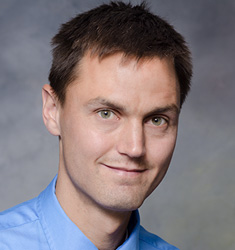
Stephen Andrews, Ph.D. Senior Water Resources Engineer, Numerical Modeler
Stephen Andrews joined RMA in 2011, bringing several years’ experience in developing, evaluating, and applying hydrodynamic and water quality models. Steve’s experience includes applying 1D, 2D, and 3D models to estuarine, river, lake, and floodplain environments. He has worked with and developed models simulating a diverse array of water quality constituents, such as persistent organic pollutants, water temperature, phytoplankton populations, and suspended sediment, and has developed software tools to improve visual display of model results. In addition, Steve is proficient in environmental sample collection and processing, giving him an excellent understanding of fieldwork instrumentation and procedures. He is also the lead author and coauthor of several peer-reviewed scientific publications. Steve earned his bachelor’s degree in environmental science at the University of Delaware and holds master’s and doctorate degrees in civil and environmental engineering from the University of California, Davis.
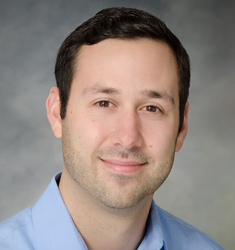
Caleb DeChant, Ph.D. Hydrologic Engineer
Caleb DeChant joined RMA in 2014, bringing experience in the application of hydrologic models and development of probabilistic hydrologic forecast systems. This experience includes the application of Data Assimilation techniques to hydrologic models and Remotely Sensed data to improve snow and streamflow simulations, and the development of multi-modeling techniques to enhance streamflow forecasts. Since arriving at RMA, Caleb has focused on the development of HEC models and decision support systems. He has aided in expanding HEC-ResSim Monte Carlo simulation framework, adding a variety of enhancements to random variable sampling. In addition, he has worked to add and improve several features in the USACE Report Generation Interface (REGI), including reservoir decision support components and flow calculation from reservoir outlet structures. Caleb earned his bachelor’s degree in civil engineering at the University of Portland, and master’s and doctorate degrees in civil engineering from Portland State University.